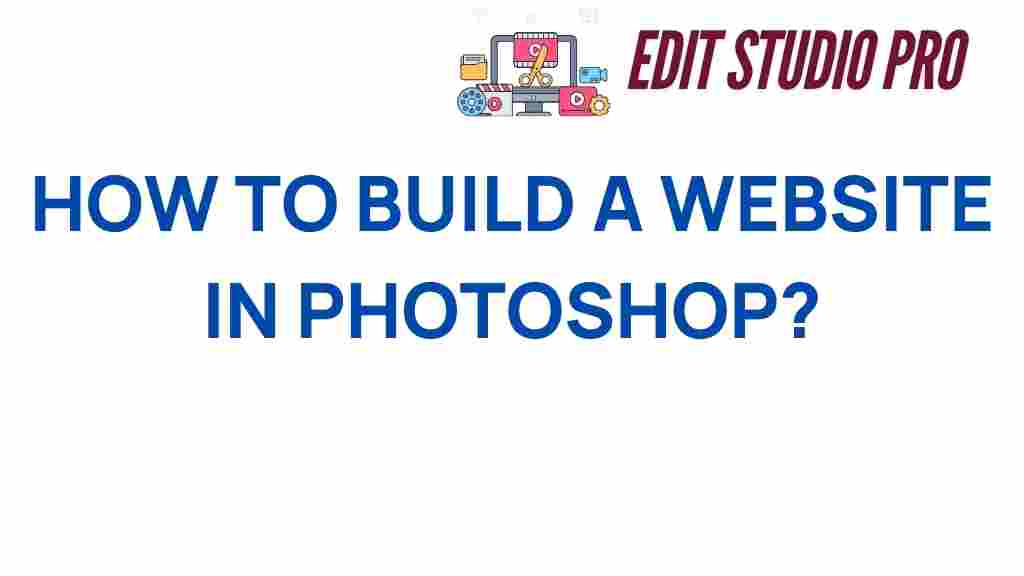Unlocking Creativity: How to Build a Website in Photoshop
In the digital age, having a strong online presence is essential for individuals and businesses alike. A well-designed website serves as the cornerstone of your digital identity. While there are various tools available for web development, Photoshop remains a powerful option for graphic design and creating stunning UI/UX layouts. This article will guide you through the process of building a website in Photoshop, providing you with essential design tips to enhance your skills and creativity.
Understanding Website Design with Photoshop
Website design involves creating the visual aspects of a site that users interact with. Using Photoshop for web development allows designers to leverage its robust graphic design features to craft unique layouts, graphics, and elements for their websites. With the right approach, you can unlock your creativity and produce a visually appealing website that stands out.
Step-by-Step Process to Build a Website in Photoshop
Here’s a detailed guide to help you design your website in Photoshop:
Step 1: Define Your Purpose and Audience
Before you dive into design, it’s crucial to understand your website’s purpose and target audience. Ask yourself the following questions:
- What is the primary goal of the website? (e.g., portfolio, e-commerce, blog)
- Who is your target audience?
- What message do you want to convey?
Step 2: Create a Mood Board
A mood board helps in visualizing the overall look and feel of your website. Collect images, colors, typography, and design components that inspire you. This will guide your design choices and ensure consistency throughout the project.
Step 3: Set Up Your Document in Photoshop
Open Photoshop and create a new document. For web design, a common size is 1920×1080 pixels, but you should adjust it based on your needs. Make sure to set the resolution to 72 DPI, which is standard for digital images.
Step 4: Design the Layout
Start with a wireframe to outline the basic structure of your website. This involves sketching the placement of elements such as:
- Header
- Navigation bar
- Main content area
- Sidebar (if applicable)
- Footer
Once you have the wireframe, start adding design elements, focusing on the visual hierarchy, spacing, and alignment.
Step 5: Choose a Color Scheme and Typography
Select a color palette that reflects your brand identity. Use tools like Adobe Color to create harmonious color combinations. For typography, choose fonts that are legible and align with your design theme. Google Fonts is a great resource for free web-safe fonts.
Step 6: Incorporate Graphic Elements
Utilize Photoshop’s powerful tools to create or edit images, buttons, icons, and other graphic elements. Make sure to maintain a consistent style throughout your website. You can also incorporate digital art to enhance the visual appeal.
Step 7: Create Responsive Designs
With the rise of mobile browsing, it’s essential to design with responsiveness in mind. Create layouts for different screen sizes (desktop, tablet, mobile) to ensure that your website looks great on all devices. You can create multiple artboards in Photoshop for each layout.
Step 8: Export Your Assets
Once you are satisfied with your design, it’s time to export your assets. Use the Export As option or the Save for Web feature in Photoshop to optimize images for web use. Choose appropriate file formats (JPEG, PNG, SVG) based on the type of graphic you are exporting.
Troubleshooting Tips
As you embark on your journey in website design using Photoshop, you may encounter some challenges. Here are some troubleshooting tips:
- Issue: Design Looks Different on Other Screens
Ensure you are using the correct color profiles (sRGB) and check your export settings. - Issue: Slow Loading Times
Optimize your images before exporting and avoid using overly large files. - Issue: Elements Overlapping
Review your layers and ensure proper spacing between elements. Use guides and grids for alignment.
Conclusion
Building a website in Photoshop combines graphic design, UI/UX principles, and creativity. By following the step-by-step process outlined in this article, you can create a visually stunning website that enhances your online presence. Remember to continuously explore and utilize creative tools available to refine your skills in web development.
For more design inspiration and resources, check out Adobe Photoshop for powerful features tailored for graphic designers and web developers alike. And if you’re looking for more tips on enhancing your design skills, visit our design tips page.
This article is in the category Tips & Tricks and created by EditStudioPro Team
